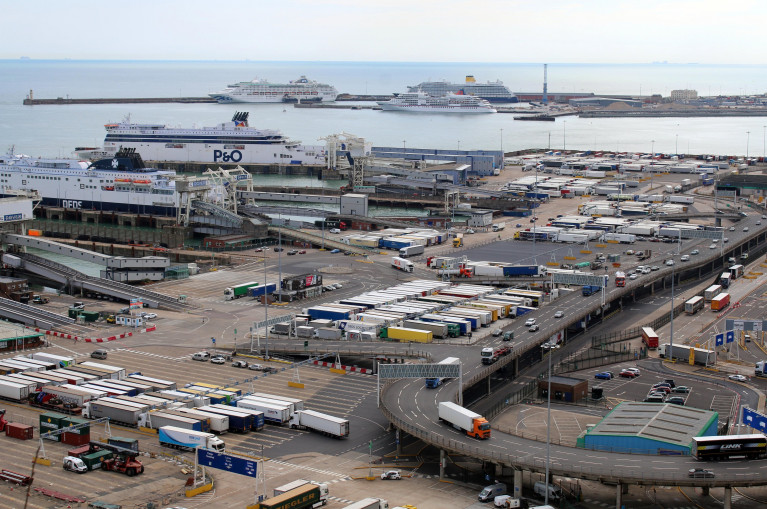Hauliers from Ireland have welcomed the dozens of new ferry routes that go directly from Ireland to the European continent, but have warned that the easing of Covid restrictions and potential extreme weather events mean that the landbridge needs to be kept as a “fallback”.
The UK landbridge – usually a route from Dublin to Holyhead, and across the English Channel to northern France – has been an convenient, fast and cheap link to the continent.
Since Brexit, that reliability has become unstable – requiring further checks and costs, and risking long delays. But despite adapting to a new way of trading and transporting, it doesn’t appear as though Ireland is completely free from reliance on its UK connections.
Around half of Ireland’s exports to countries other than the UK, and almost 150,000 trucks, travelled over the UK landbridge each year before Brexit. That rate of traffic has now been halved, and is being diverted around the UK on ferries going directly to the EU.
The number of Irish trucks using the UK landbridge fell to 50% in January, after new Brexit checks were introduced covering animal and plant safety standards, customs checks and costs, and regulatory standards.
Meanwhile, traffic flows through Rosslare (Europort) increased by 45%, as 12 sailings a week from all Irish ports to the continent increased to six a day. The routes that circumvent the UK to the European continent are called ‘direct’ routes, and traditionally have taken more time and cost more to use.
Fianna Fáil MEP and EU Trade Committee member Barry Andrews said that direct sailings to the continent had increased from 12 per week to 42 per week, or six a day.
This has happened without much State intervention, and is largely businesses adapting to more reliable routes post-Brexit – despite the new options being slower and more costly than the landbridge.
Much more from the Journal.ie
































































